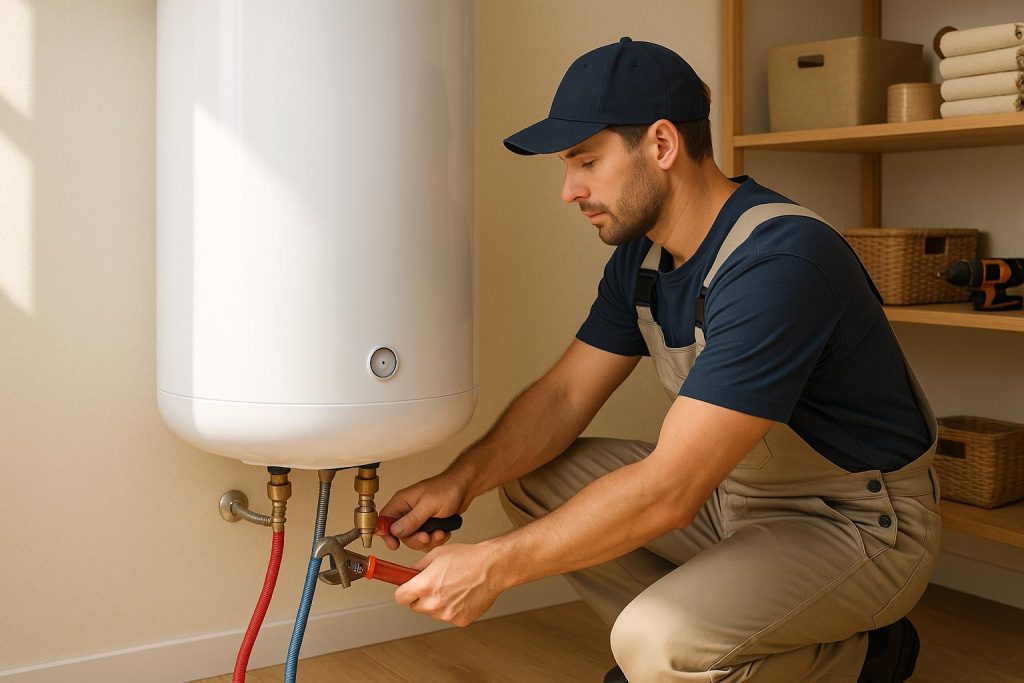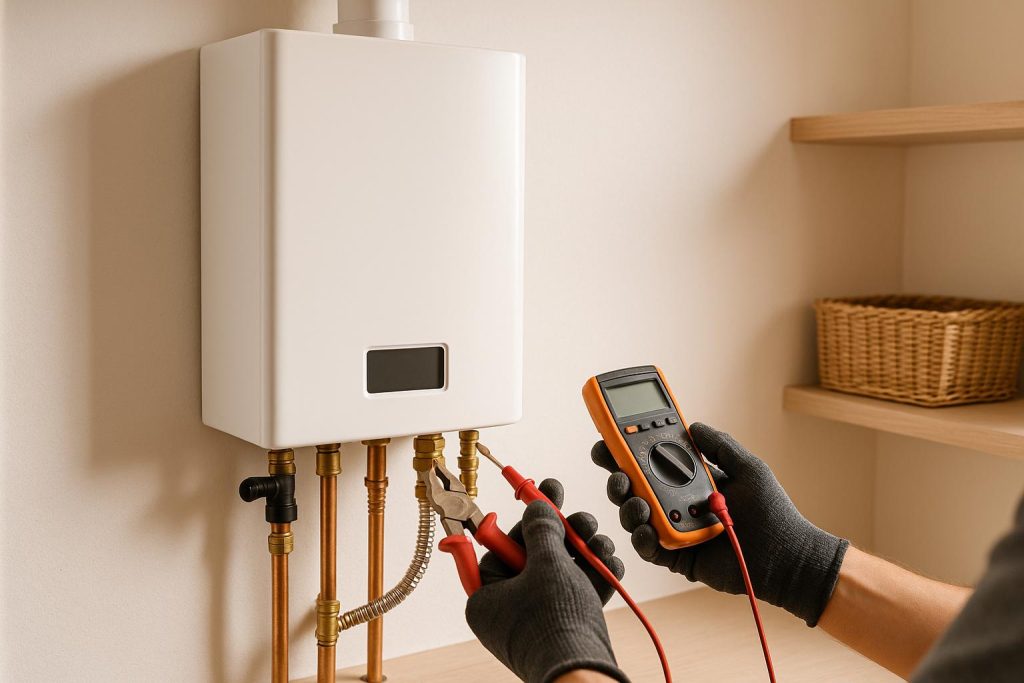A pressure regulator, also known and a pressure reducing valve as its name imply is a device used to adjust the pressure of the incoming water from the city to the house.
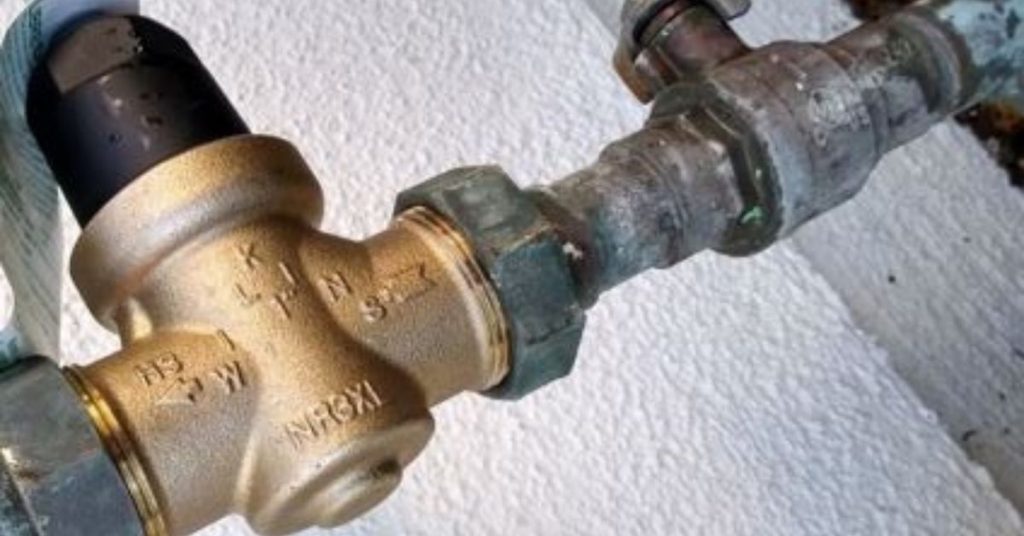
The signs of a bad pressure regulator include very high or low water pressure, fluctuating water pressure, vibrating/noisy pipes, water hammers, leaking appliances or sometimes no water at all.
Troubleshooting a water pressure regulator is essential to maintain consistent water pressure in your plumbing system. Here’s a brief summary of common problems and tests associated with water pressure regulators:
Common Problems
- Low Water Pressure: If you’re experiencing reduced water pressure throughout your home, it may indicate a malfunctioning pressure regulator.
- High Water Pressure: Excessively high water pressure can cause damage to plumbing fixtures and appliances. A faulty regulator may allow pressure to spike.
Tests and Troubleshooting
- Pressure Gauge Test:
- Attach a water pressure gauge to a hose bib or faucet near the water main.
- Check the gauge reading when water is not in use. It should be within the recommended range (usually 40-80 psi for residential systems).
- Then, turn on a faucet to see how the pressure changes. If the pressure remains steady regardless of water usage, the regulator is functioning correctly. Fluctuations could indicate an issue.
- Pressure Adjustment:
- Some pressure regulators have an adjustment screw or nut. You can adjust the pressure by turning this screw clockwise to increase or counterclockwise to decrease pressure. Refer to your regulator’s manual for specific instructions.
- Inspect for Leaks:
- Check the area around the pressure regulator for any signs of leaks or moisture, which could indicate a malfunctioning diaphragm or valve.
- Strange Noises:
- If you hear a loud humming or vibrating noise coming from the pressure regulator, it may indicate a problem. This could be due to a worn-out diaphragm or debris inside the valve.
- Replace If Necessary:
- If the regulator is old or has severe issues, replacement might be the best solution. Consult a professional plumber for replacement and installation.
- Maintenance:
- Regularly inspect and clean the screen or filter located on the inlet side of the regulator to prevent debris from affecting its operation.
A water pressure regulator will last for 5 years on average although some will last for way longer than that. If you live in a area with hard water, the lifespan of your pressure regulator will be considerably reduced.
Pressure regulators cost $50 dollars on average although some will cost as high as $150. A plumber will however charge you as much as $300 to install it, a job which takes between 2 and 4 hours.
Pressure Regulator Problems
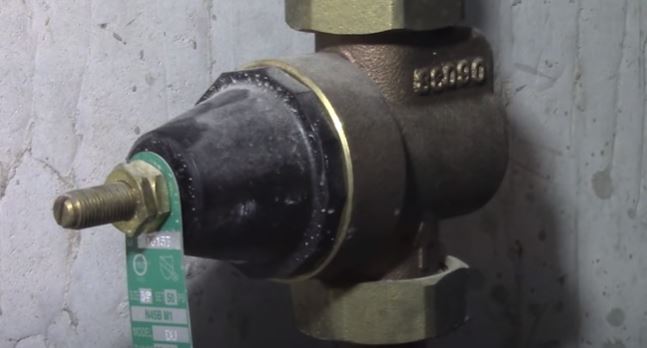
Pressure regulators are affected by 3 main problems. Let us look at each one of them:
1. Blockages
If you live in an area with hard water, your pressure regulator is likely to fail at a faster rate than one in an area with soft water. This is caused by clogging by mineral deposits.
The problem is a gradual and not an instant one. Mineral deposits (especially calcium) will start to accumulate inside the valve and with time totally block the passage of water and you will experience low water pressure in your house.
A blocked pressure regulator does not always means that it needs to be replaced. A plumber will remove and disassemble it and soak it in white vinegar.
The vinegar will dissolve the calcium and afterwards they will assemble it and install it back. You can also do this on your own if you are an experienced DIYer.
2. Worn out Internal Parts
The only part that you can see in a pressure regulator is the screw at the top. The screw is connected to a spring inside the valve which is then in turn connected to a diaphragm.
Tightening or loosening the screw will compress or relax the spring, which will alter the shape of the diaphragm, which is what varies the area through which water passes through.
With time, the spring and diaphragm will wear out and the pressure regulator will stop working as intended. You can test this by trying to increase or reduce the water pressure and check if there will be any change.
If the pressure remains constant no matter how much you turn the screw, the internal pressure regulator components are damaged and you will have to replace them or replace the entire pressure regulator.
3. Wrong Pressure Settings
Sometimes there is nothing wrong with your pressure regulator. It is just a case of the water pressure being set incorrectly. The normal water pressure for a house is usually between 40 and 70 psi.
Adjusting the water pressure from the pressure regulator is actually very easy. You will only need to turn the screw clockwise to increase the water pressure or counterclockwise to decrease the water pressure.
Check out this post for more information.
Troubleshooting a Pressure Regulator
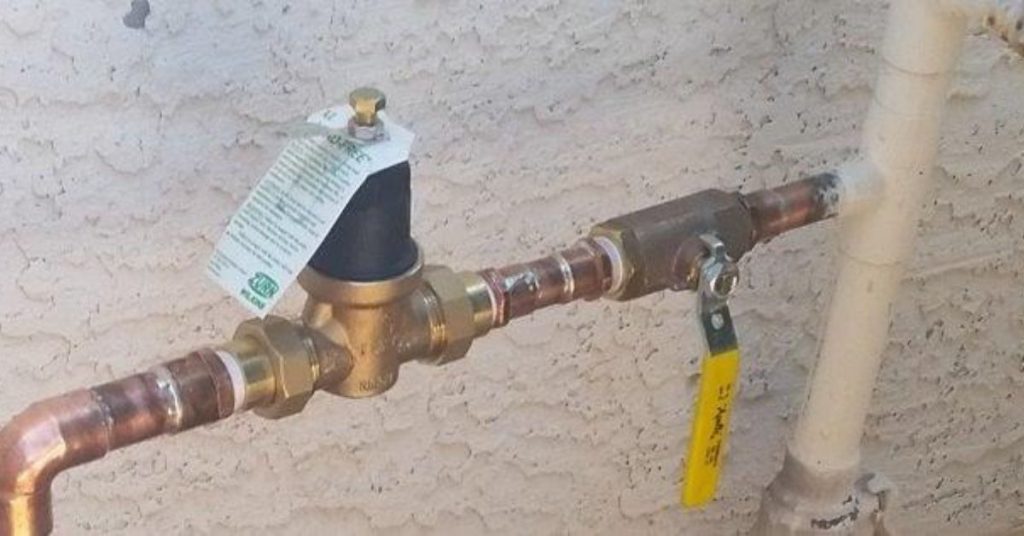
If you suspect your pressure regulator is not functioning as well as you need it to, the first thing you should do is to test/troubleshoot it. This is usually a very simple process.
These are the steps to follow:
- Connect a pressure gauge to an outside spigot. In most houses, there is always a pressure gauge installed very close to the pressure regulator. If this is the case in your house, skip this step.
- Note down the current pressure reading on the pressure gauge.
- For accurate results, make sure that there is no water consumption in your house like a running washing machine or shower. Such activities will lower the recorded pressure.
- Head over to your pressure regulator armed with a small adjustable wrench and a flathead screwdriver.
Note: If you do not know where your pressure regulator is, it will be found very close to the main water shut off valve. This will be in the basement close to the water heater or outside on an external wall where the main water line enters the house.
You will see a long screw on top of the valve, which is fastened using a nut.
- Use the adjustable wrench to loosen the nut, which will free up the screw for manipulation.
- Use the screwdriver to loosen the screw (turn it counterclockwise) a few turns and then dash to where the pressure gauge is. Check if there is a change in water pressure (should decrease).
- Turn the screw clockwise and again check if the pressure in the pressure gauge is changing.
Please note that some screws are also manipulated using a wrench and not screw driver.
If the pressure gauge is responding to every turn you make on the pressure regulator screw, it means the pressure regulator is good. On the other hand, if it doesn’t, it is bad and you may need to replace it.
Note: Always tighten the nut on the screw. Failing to do so will result in changes in water pressure. The nut helps to ensure that the pressure you have set is maintained.
Signs of a Bad Pressure Regulator
The following are the telltale signs of a bad pressure regulator:
1. Fluctuating Water Pressure
With a pressure regulator in place, you should have a constant flow of water to your house. If you turn a faucet and notice that the water pressure is fluctuating between very low and very high, you definitely have a bad pressure regulator.
This is often caused by worn out or damaged internal parts of the pressure regulator. Unless you are very knowledge in that area, you will need to bring in a plumber to repair or fix the problem.
2. High Water Pressure
If water is blasting out of your faucets and shower heads at a very high pressure and this has not always been the case, it is safe to say you pressure regulator has seen better days.
A pressure regulator has a spring and a diaphragm that are connected to the screw you see at the top of the regulator to create a variable flow area.
With time, the spring and diaphragm will wear out and as a result water will pass though the device without and restriction. This is what causes the water pressure to increase all of a sudden.
Again, when this happens, you will need to bring on a plumber to repair or replace the valve.
3. Low Water Pressure

Low water pressure when you have a pressure regulator is caused by clogging of the valve by mineral deposits. If you live in an area with hard water, minerals (especially calcium) will clog the valve and in the process restrict the flow of water resulting in low water pressure.
In this cause what you can is to disassemble the valve and soak it in container full of vinegar. The vinegar will dissolve the minerals thereby opening up the valve.
If you can’t do this on your own, a plumber or handyman/woman will do it for you.
4. Noisy Pipes
Noisy pipes are caused by high water pressure. Although most people don’t mind high water pressure especially in their showers, your plumbing will take a beating for it.
The 2 most common types of noises in pipes are water hammers and vibrations. As water moves inside the pipes at a high pressure, it causes the pipes to vibrate.
If the problem is not fixed promptly, the vibrations cause the water pipes studs and brackets to loosen up which in turn causes the pipes to start rattling as water flows through them.
Water hammers are experienced when water flowing to a fixture like a faucet is suddenly forced to stop/change direction, usually when the faucet is turned off.
Although water hammer arrestors will take care of water hammers, you will need to constantly bleed them and hence you should just lower the water pressure by fixing or replacing a bad pressure regulator.
5. Prematurely Failing Appliances
Most of your home appliances like toilets, washing machines and dishwashers have valves which have a maximum pressure rating (usually not exceeding 80 psi). When the water pressure is higher than the rating of the appliances, the valves fail at a faster rate resulting in leaks.
If you faucets and toilets are leaking at a higher rate than usual, the water pressure is too high for the seals. You will either need to adjust it at the pressure regulator or fix it if it is bad.
6. Water Regulator Making Noise
Is you water pressure regulator making a moaning noise? That is a sign that everything is not alright inside the valve.
A noisy pressure regulator is caused by internal damages or clogging. The noise is as a result of the water forcing its way through the restriction.
Again you can remove and clean the pressure regulator or replace it altogether.
And basically that is how to troubleshoot a pressure regulator.


